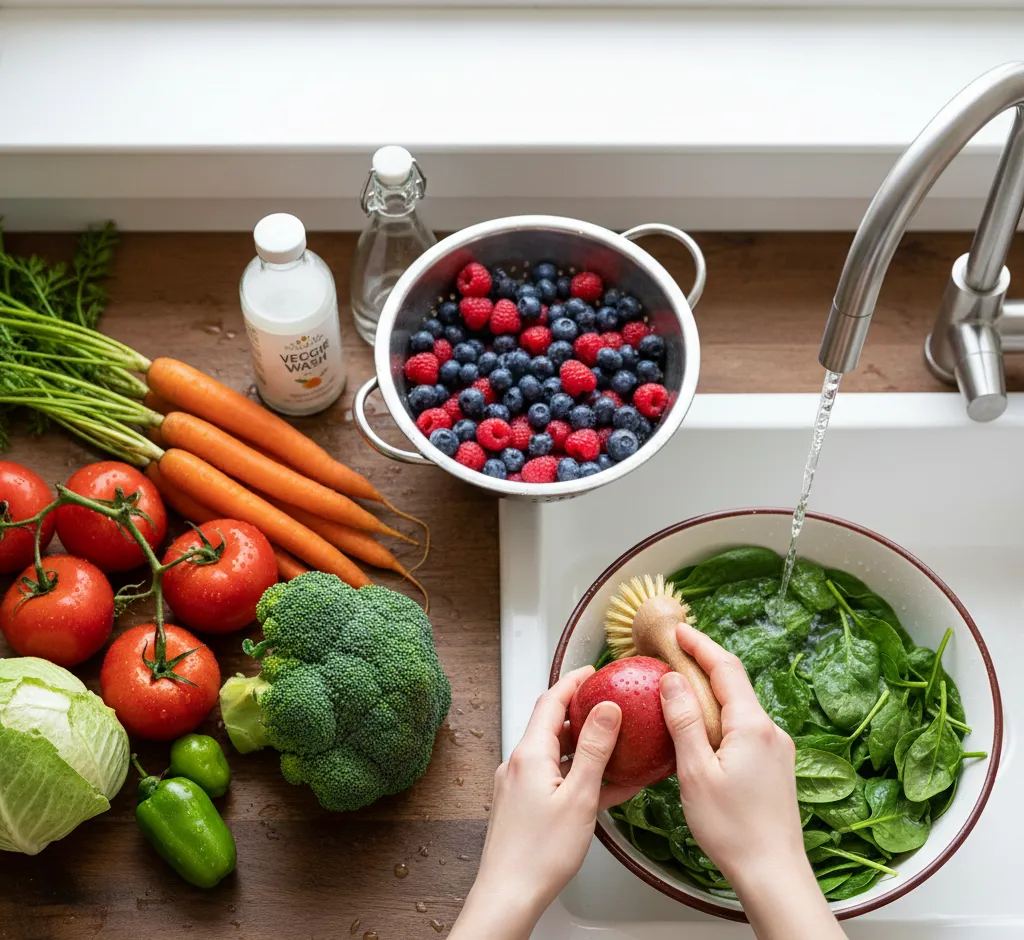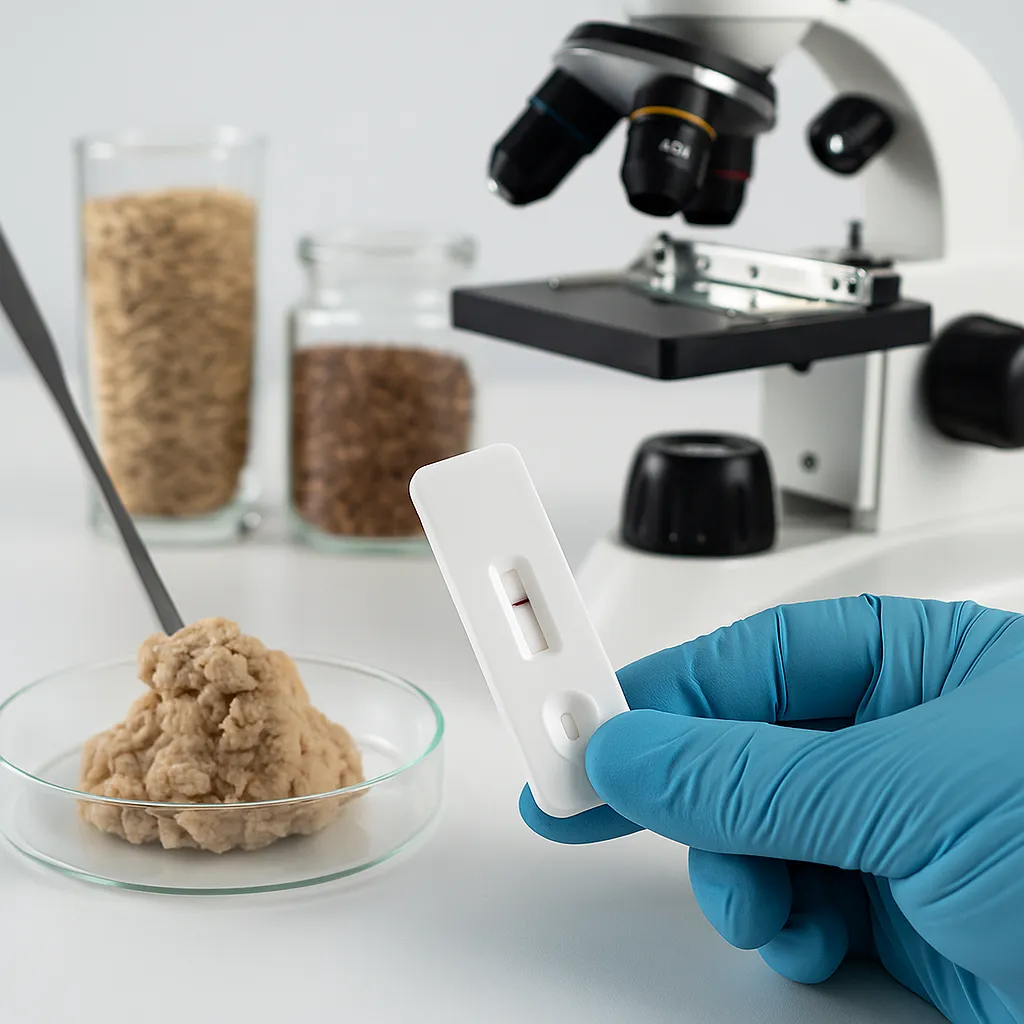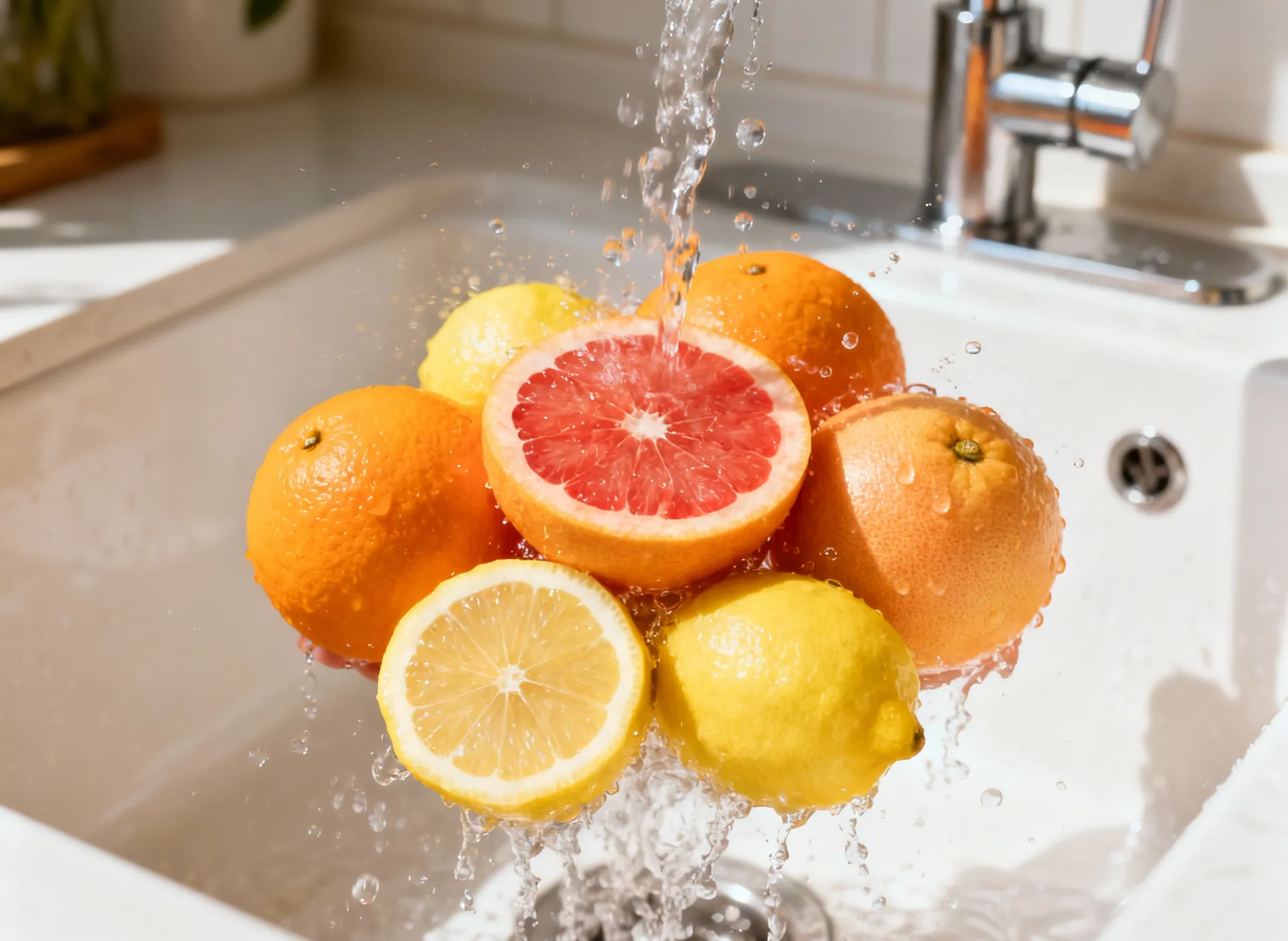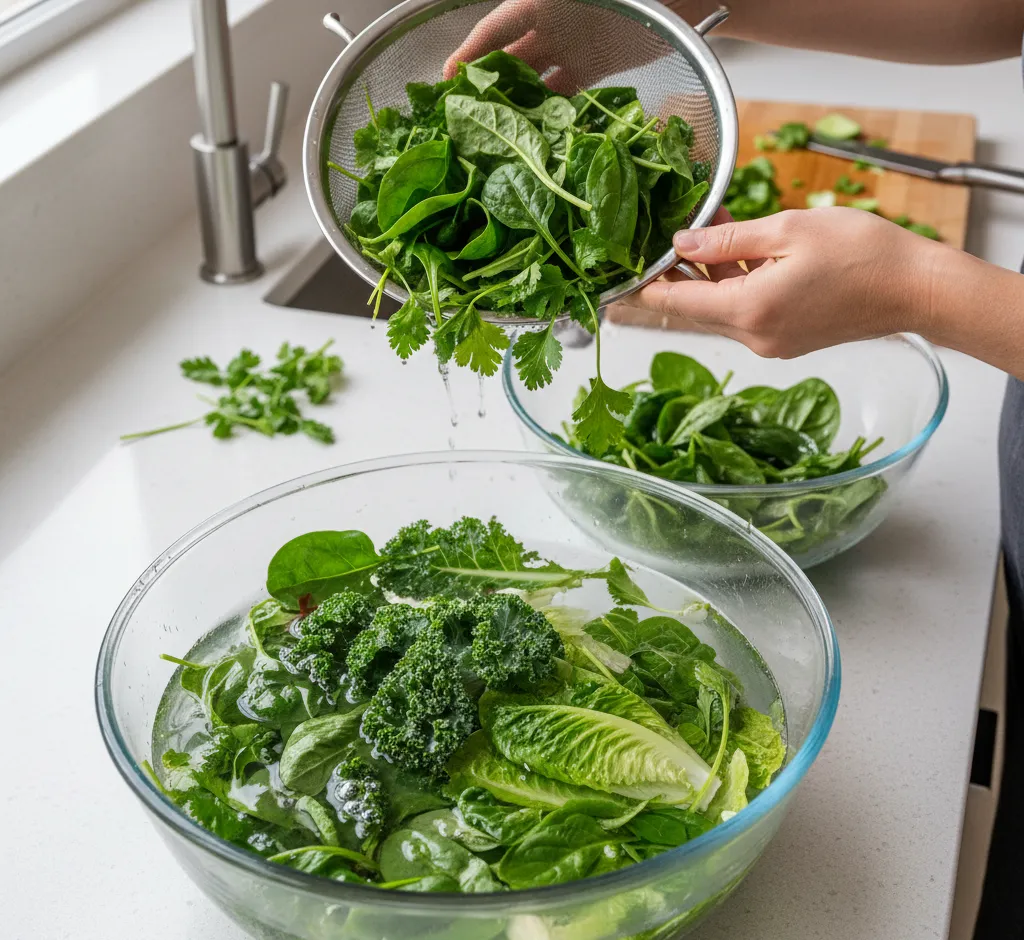The Clean Truth: Why You Must Never Wash Produce with Soap
Discover the health risks and food safety guidelines that explain why you should never use dish soap or detergent to wash fruits and vegetables. Learn the FDA-approved cleaning alternatives.

🍏 The Hidden Dangers: Why Soap and Produce Don't Mix
It’s a common scenario: you bring home a bounty of fresh fruits and vegetables from the market, glistening with promise. Before slicing that juicy tomato or biting into a crisp apple, you head to the sink. For many, the impulse is to reach for dish soap, believing that if it cleans plates, it must be the ultimate solution for removing dirt, pesticides, and germs from their produce. After all, we use soap to wash our hands and dishes, so why not our food?
However, this seemingly logical practice is one that food safety experts, the U.S. Food and Drug Administration (FDA), and the Centers for Disease Control and Prevention (CDC) universally advise against. The belief that soap is a superior sanitizer for fresh produce is a **dangerous myth** that can compromise both the safety and the flavor of your food. The risks associated with this practice far outweigh any perceived benefit. This comprehensive guide will delve deep into the science and safety guidelines that explain why you should stick to water—and simple scrubbing—when preparing your fresh harvest.
🚫 The Absorption Problem: The Porous Nature of Fruits and Vegetables
The primary reason for avoiding soap on produce lies in the fundamental biological structure of fruits and vegetables. Unlike a smooth, non-porous ceramic plate, most produce items are covered in microscopic pores, also known as **stomata** and **lenticels**. These tiny openings are essential for the plant's life, allowing for respiration and gas exchange.
Consider the structure of leafy greens like lettuce, or the skin of softer fruits like berries and tomatoes. When you apply soap to these surfaces, the chemical compounds—designed to cut through grease and oil—are easily drawn into the porous tissues. In essence, the produce acts like a sponge.
- Waxy Coatings: Even produce with seemingly waxy or hard skins (like cucumbers or apples) often has a natural or applied coating that can be compromised by detergents, allowing soap to seep underneath.
- Internal Contamination: Once the soap solution is absorbed, rinsing with water alone is often insufficient to remove it entirely from the produce's interior. This leads to residual soap, which is a significant health concern.
The Chemistry of Soap Residue
Standard household dish soaps contain a cocktail of ingredients, including surfactants, perfumes, dyes, and antibacterial agents (like triclosan, though it’s less common now). These ingredients are designed for cleaning inanimate objects and are **not** formulated for consumption. Ingesting them, even in small amounts, is ill-advised.
Health Risks of Unintended Ingestion: What Soap Residue Does to Your Body
When you consume residual soap on your produce, you introduce chemicals that can disrupt the delicate balance of your gastrointestinal system. The health consequences can range from mild to severe:
- Gastrointestinal Distress: Soap is designed to emulsify fats. In your stomach, it can irritate the mucosal lining, leading to nausea, vomiting, stomach cramps, and diarrhea.
- Taste and Odor Contamination: Detergent residues, especially from scented soaps, will dramatically alter and ruin the natural flavor of the produce. This is often the most immediate and noticeable consequence.
- Potential Toxicity: While small exposures are rarely lethal, long-term, repeated ingestion of certain chemical components (like non-food-grade colorants or preservatives) can raise concerns about chronic toxicity.
- Antibiotic Resistance: Using antibacterial soaps on food unnecessarily exposes your body to these agents, which contributes to the broader public health issue of antibiotic-resistant bacteria.
📜 The Official Stance: FDA and USDA Recommendations
If soap were necessary or even beneficial, the leading food safety authorities would certainly mandate it. Instead, both the FDA and the U.S. Department of Agriculture (USDA) explicitly recommend against the use of detergents, bleach, or other cleaning products on fresh produce.
FDA Guidance: “Do not wash produce with soap, detergent, or commercial produce wash. Use of soap or detergent on produce is not recommended. Produce is porous, and soap can be absorbed by the produce and can be hard to remove. This can cause you to ingest the soap, which can cause illness.”
The guidelines are clear: **plain, running water** is the gold standard. Food safety is achieved through physical removal of pathogens and residues, not chemical sterilization.
🧪 The Efficacy Debate: Does Soap Even Work Better?
Beyond the absorption risk, there is little evidence to suggest that soap is actually more effective than water at removing the *primary* contaminants we worry about: surface microbes and pesticide residues.
- Pesticide Removal: Most modern pesticides are formulated to be water-resistant (lipophilic) so they don't wash off in the rain. Dish soap, while an emulsifier, is often not powerful enough—or is rinsed off too quickly—to fully break down these chemical bonds. Studies have shown that a simple water rinse, often combined with friction (scrubbing), is surprisingly effective at reducing surface pesticide load.
- Bacterial Removal: The mechanical action of scrubbing under running water physically dislodges bacteria, dirt, and mold spores. This physical removal is often more effective than a quick chemical wash.
💧 Best Practices: Safe and Effective Produce Cleaning Methods
Instead of reaching for dish soap, adopt these proven and safe methods for cleaning your fresh fruits and vegetables:
1. The Water-Only Standard
The simplest and most effective method, suitable for most produce.
- Firm Produce (Apples, Carrots, Potatoes): Use a clean, designated vegetable brush to lightly scrub the surface under cool, running tap water. The friction is key to removing waxy buildup and surface microbes.
- Soft Produce (Berries, Grapes): Place them in a colander and rinse gently under a steady stream of water. Do not let them soak, as this can encourage nutrient loss and bacterial growth if the water is contaminated.
- Leafy Greens (Lettuce, Spinach, Kale): Separate the leaves and immerse them in a large bowl of cool water. Swish them around, then lift the leaves out and drain the bowl. Repeat this process until all visible sand and dirt have settled at the bottom of the bowl.
2. The Vinegar Solution (When Extra Cleaning is Desired)
For those who want an extra layer of peace of mind, a mild vinegar solution can be an effective and safe alternative to soap. The mild acidity of distilled white vinegar can help kill some surface bacteria without the toxicity risk of detergent.
Formula: A solution of 3 parts water to 1 part distilled white vinegar.
It is important to note that even vinegar solutions should be used sparingly and always followed by a thorough water rinse.
🌱 Preparing for Consumption: Beyond the Wash
The washing process is just one part of ensuring food safety. You should also adopt these habits:
- Wash Your Hands: Always wash your hands with soap and water (for 20 seconds!) before and after handling produce. This is the single most important step.
- Clean Your Equipment: Ensure that cutting boards, knives, and countertops are clean before preparing produce to avoid cross-contamination from meat or other surfaces.
- Trim Damaged Areas: If any part of the fruit or vegetable is bruised or damaged, cut that section away, as bacteria can thrive there.
- Dry Thoroughly: Pat or spin-dry your produce after washing. Excess moisture creates an ideal environment for any residual bacteria to multiply, especially if the produce is stored after washing.
🚨 Commercial Produce Washes: Are They Any Better?
While this article focuses on avoiding household detergents, the market offers various commercial “produce washes.” These products are often marketed as being specifically formulated to remove pesticides and waxes more effectively than water.
However, independent testing and safety organizations have repeatedly found that these specialized washes offer **no significant advantage** over vigorous washing with plain water. They can also be expensive and, similar to soap, may contain ingredients that can be absorbed or cause irritation. In many cases, the main active ingredients are citric acid, baking soda, or a mix of mild surfactants—none of which are essential if you follow proper scrubbing techniques.
✅ The Final Word on Food Safety
The drive to clean our food thoroughly is a commendable one, but it must be balanced with sound scientific and safety advice. When it comes to cleaning fresh fruits and vegetables, more is not better. Introducing non-food-grade chemicals like dish soap into the equation creates unnecessary health risks and ruins the flavor of your ingredients.
Trust in the mechanical action of clean water and a brush. Stick to the expert advice: **Wash your hands, wash your equipment, and rinse your produce thoroughly under running water.** Your stomach—and your taste buds—will thank you for it.


